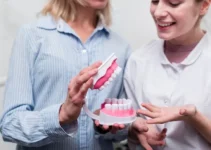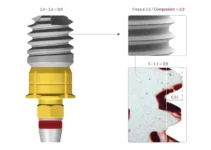An infected tooth, often a painful and discomforting issue, arises when bacteria invade the dental pulp, the innermost part of the tooth containing nerves and blood vessels. Left untreated, this can lead to severe complications including abscess formation, spread of infection to the jaw and other areas, and potentially, loss of the tooth. Common treatments include antibiotics to fight the infection, root canal therapy to remove infected tissue, or extraction in severe cases. Early detection and timely professional care are crucial to managing this dental health issue effectively.
Causes of an Infected Tooth
An infected tooth, also known as a dental abscess, can cause significant pain and discomfort. Understanding the underlying causes is crucial for both prevention and prompt treatment. Bacterial infections are the primary cause of tooth infections, often entering through either dental cavities or cracked teeth. Infections can lead to serious complications, such as the spread of bacteria to other parts of the body. Therefore, identifying and addressing the initial causes is vital for maintaining oral health. In this section, we will focus on two primary causes of tooth infections: dental cavities and cracked teeth.
By understanding these causes, you can take proactive steps to avoid infections and maintain a healthy mouth. Here’s an in-depth look into each cause.
Dental Cavities
Dental cavities, also known as tooth decay, are one of the most common causes of tooth infections. Cavities form when plaque, a sticky film of bacteria, builds up on the teeth. Plaque produces acids that erode the tooth enamel, creating holes or cavities.
Once a cavity has formed, bacteria can penetrate deeper into the tooth, reaching the pulp, the innermost layer containing nerves and blood vessels. This can lead to inflammation and infection, resulting in a painful abscess.
Several factors contribute to the development of dental cavities:
- Poor oral hygiene
- High sugar consumption
- Dry mouth
- A diet high in carbohydrates
Regular dental check-ups and good oral hygiene practices, such as brushing and flossing, can significantly reduce the risk of cavities and thereby prevent tooth infections.
Cracked Teeth
A cracked tooth can also serve as a gateway for bacteria to infect the tooth’s pulp. Cracks can occur due to trauma, heavy biting forces, or even due to natural wear and tear over time. When a tooth is cracked, bacteria can seep into the crevice, leading to infection.
There are various types of cracks, from minor surface cracks to more severe splits that can affect the entire tooth structure. Early detection is essential to prevent the crack from worsening and causing infection.
Common causes of cracked teeth include:
- Chewing hard foods
- Teeth grinding (bruxism)
- Accidents or trauma
- Old, large dental fillings
If you suspect a cracked tooth, it’s crucial to consult your dentist immediately. Timely treatment can often save the tooth and prevent a painful infection.
Understanding the primary causes of tooth infection can help you take preventive measures and seek timely treatment. To learn more about dental health and treatments, be sure to explore our other articles. They provide valuable information on a range of topics that can help you maintain a healthy smile.
Symptoms of an Infected Tooth
An infected tooth, commonly referred to as a dental abscess, is a serious condition that requires immediate attention. Ignoring the signs can lead to more severe health issues, affecting not only your oral health but also your overall well-being. Recognizing the symptoms of an infected tooth can help you seek prompt care and prevent complications.
If you suspect an infection, it’s crucial to observe the symptoms early on. These can be varied and sometimes deceptive, but knowing what to look for can make all the difference. Below are some of the most common symptoms associated with an infected tooth.
Pain and Swelling
One of the most noticeable symptoms of an infected tooth is persistent pain. This pain is often severe and throbbing, making it difficult to chew or even open your mouth. The pain may also radiate to your jaw, ear, or neck, complicating the diagnosis if not properly examined by a healthcare provider.
Swelling is another indicator of a dental infection. The inflammation can appear in the gums, cheek, or jaw area, causing visible puffiness. In some severe cases, the swelling might even lead to difficulty in breathing or swallowing, which requires immediate medical intervention.
Fever and Bad Breath
A fever is your body’s natural response to an infection, and it’s no different when it comes to an infected tooth. If you are experiencing a fever along with other oral symptoms, it is a clear sign that your body is trying to fight off an infection. Persistent fever, particularly when combined with other symptoms, necessitates urgent dental care.
Another common but often overlooked symptom of an infected tooth is bad breath or a foul taste in your mouth. This occurs because the infection produces pus, which contains bacteria and decomposing tissue. The presence of pus can lead to a bad odor that is noticeable not just to you but also to those around you.
Recognizing these symptoms can be the first step towards effective treatment and recovery. If you are experiencing any of the symptoms mentioned, it is advisable to consult your dentist immediately. Early diagnosis and treatment can prevent the infection from spreading and causing more severe health issues.
If you’re interested in learning more about dental health, don’t hesitate to read our other articles on related topics.
Treatments for an Infected Tooth
Dealing with an infected tooth can be both painful and concerning. The good news is that there are several effective treatments available to address this issue. The choice of treatment primarily depends on the severity of the infection and the overall condition of the tooth. Here, we will explore some common and widely accepted treatments for an infected tooth that can help alleviate pain and restore dental health.
Timely intervention is crucial when dealing with an infected tooth. Delaying treatment can lead to complications such as the spread of infection to other parts of the body. It’s essential to consult with a dental professional as soon as symptoms like severe toothache, swelling, and fever appear. Now, let’s delve into the various treatment options available to manage an infected tooth.
Antibiotic Therapy
Antibiotic therapy is often the first line of defense against a tooth infection, particularly when the infection is in its early stages. Antibiotics help by targeting and eliminating the bacteria responsible for the infection. However, it’s important to note that antibiotics alone are usually not a permanent solution but rather a way to manage symptoms and prevent the infection from spreading.
Common antibiotics prescribed for dental infections include amoxicillin, clindamycin, and metronidazole. These medications are selected based on their efficacy against the types of bacteria typically found in oral infections. Your dentist will determine the most appropriate antibiotic and dosage based on the specific circumstances of your infection.
It is essential to complete the entire course of antibiotics as prescribed, even if symptoms improve before finishing the medication. Incomplete courses can lead to antibiotic resistance, making future infections more difficult to treat. Always follow your dentist’s instructions carefully when taking antibiotics.
Root Canal Treatment
Root canal treatment is a highly effective procedure for saving an infected tooth that would otherwise need to be extracted. During a root canal, the infected pulp inside the tooth is removed, and the interior of the tooth is thoroughly cleaned and disinfected. The space is then filled with a biocompatible material, and the tooth is sealed to prevent further infection.
This procedure is typically performed under local anesthesia, ensuring that it is relatively pain-free. Advances in dental technology and techniques have made root canal treatment more efficient and comfortable than ever before. Patients can expect a significant reduction in pain and the restoration of normal tooth function post-treatment.
After a root canal, a crown is often placed over the treated tooth to provide additional support and protection. This helps to restore the tooth’s strength and functionality, allowing patients to chew and bite normally. Root canal treatment has a high success rate and can last a lifetime with proper oral hygiene and regular dental check-ups.
Tooth Extraction
In cases where an infected tooth is severely damaged and cannot be saved, tooth extraction may be necessary. This procedure involves the complete removal of the affected tooth from its socket in the bone. Tooth extraction is typically considered a last resort when other treatments, such as antibiotics and root canals, are not viable options.
Before performing an extraction, the dentist will evaluate the tooth and surrounding tissues to determine the best approach. Local anesthesia is administered to ensure the procedure is as comfortable as possible. In some cases, sedation may be used to help patients relax, especially if multiple teeth need to be extracted.
Following an extraction, it’s important to follow your dentist’s post-operative care instructions carefully to promote healing and prevent complications such as dry socket or infection. This may include taking prescribed medications, maintaining good oral hygiene, and avoiding certain foods and activities for a specified period.
Although extraction results in the permanent loss of a tooth, there are several options for tooth replacement, such as dental implants, bridges, or dentures. These solutions can help restore functionality and aesthetics, allowing patients to regain their confidence and maintain a healthy smile.
Dealing with an infected tooth can be challenging, but understanding the available treatments can help you make informed decisions about your dental health. For more in-depth information on these and other dental topics, be sure to read our other articles.
Common Questions About Infected Teeth
If you’re concerned about an infected tooth, it’s important to arm yourself with relevant information to address the issue effectively. Here’s a commonly asked question that could help clarify your doubts.
What are the primary symptoms of an infected tooth?
The primary symptoms of an infected tooth typically include severe toothache, sensitivity to hot and cold temperatures, swelling in the gums around the tooth, and a foul taste in the mouth. In some cases, you may also experience a fever or swollen lymph nodes. It’s crucial to seek prompt dental care if you notice any of these symptoms to prevent the infection from spreading.

My name is Salman Kapa, a 73-year-old expert in bone regeneration and dental implantology. With decades of experience in the field, I am dedicated to advancing our understanding of oral health and hygiene. Through my research and writing, I aim to contribute to the development of innovative solutions in dental care.




